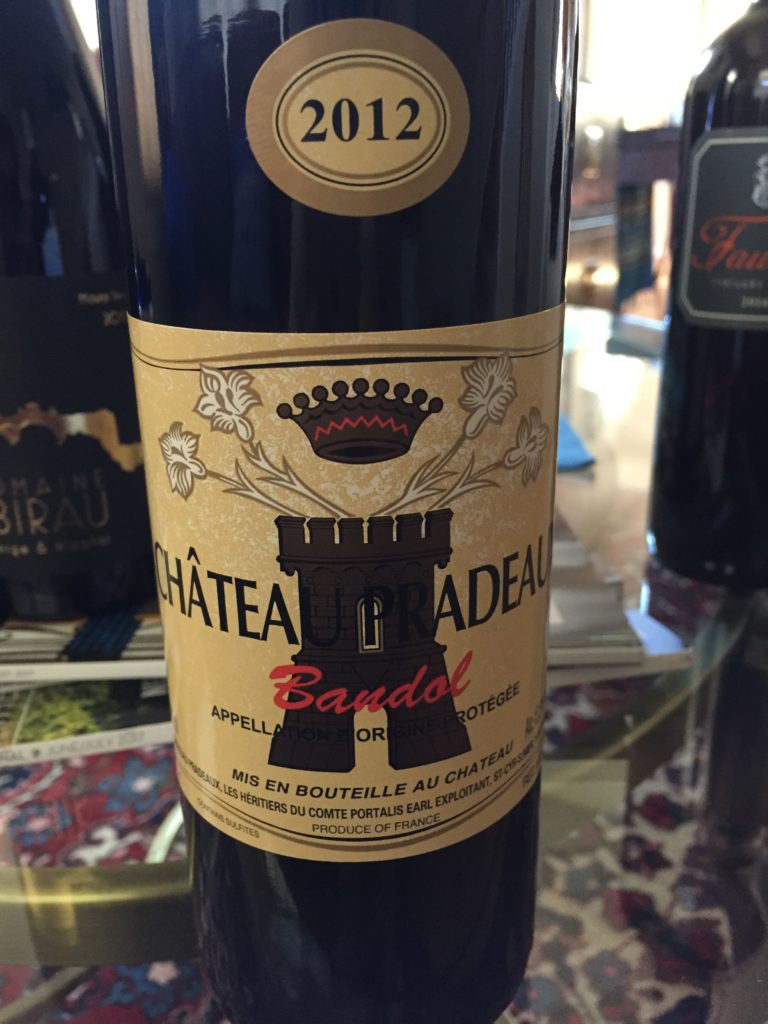Episode 168: Tour de Provence – More Than Pink Wine and Pastis
Provence. Bucolic images of lavender fields, stone farmhouses, Pastis, bowls of mussels … or Russell Crowe slowly unrotting his soul in his uncle’s vineyard in the movie “A Good Year” may come to mind. But there is more to the story. Sun, a patchwork geology, and that wind – along with a magic blend of innovation and tradition – aid the vines in the varied regions in producing wines that are now superstars on the world stage.
In Our Glasses (1:00)
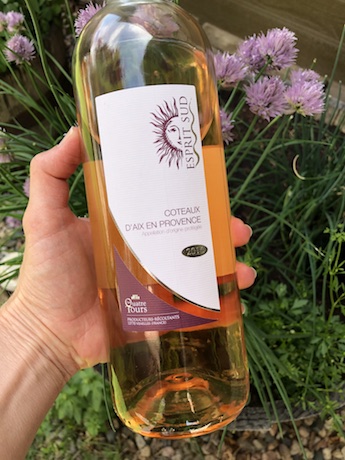
Steph: 2016 Les Quarte Tours “Esprit Sud” Côteaux d’Aix-en-Provence AOP ($12)
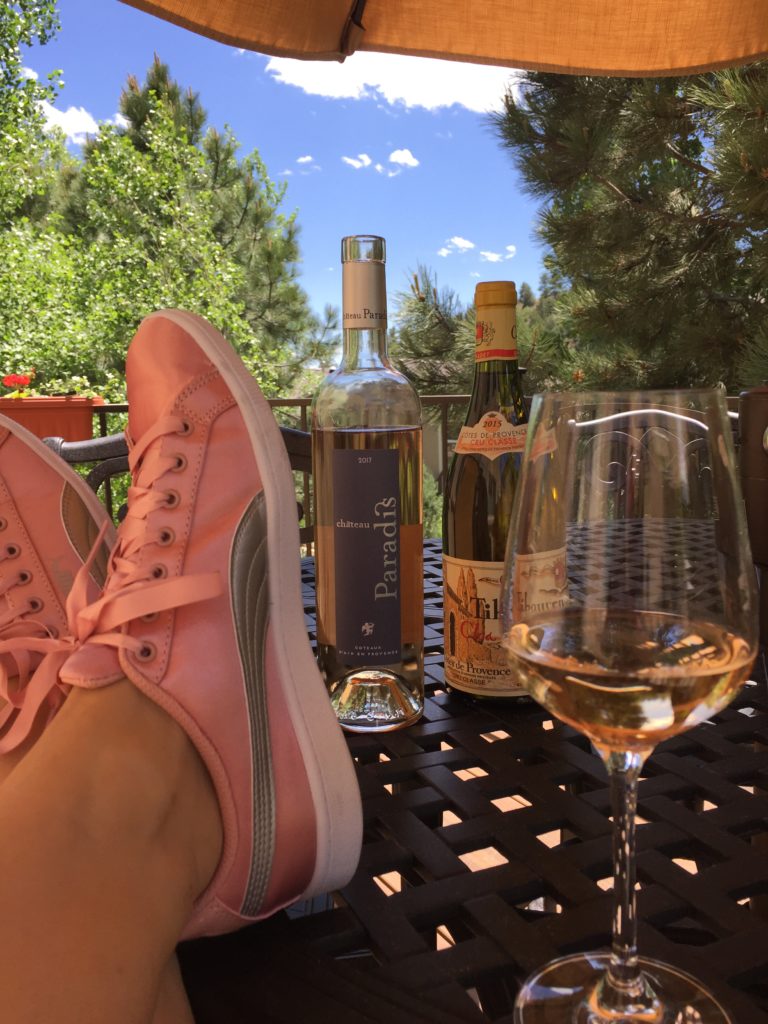
Val: 2017 Chateau Paradis, rose’, Côteaux d’Aix-en-Provence AOP ($18)
Regional Rap About Provence (2:16)
Beyond the escapes of Peter Mayle’s books (A Year in Provence, upon which A Good Year was based, & Encore Provence), Provence makes some serious wine, over 185 million bottles per year. Over 89% of Provence’s wine does happen to be rose’, which constitutes nearly 40% of all French rose’ production.
This means that other regions in France do produce rose’ – and some great rose’ at that, FYI.
History (3:56)
Provence is France’s oldest wine growing region and the world’s largest region dedicated to producing rosé wines. It even boasts the Rosé Research and Experimentation Center which started back in 1999.
A Greek people called Phocaeans brought the vine to this region, and they founded the city of Massalia (today we know it as Marseille). When the Romans showed up later, as they usually do in the wine world, they called their new playground nostra provincia (meaning “our province”) and hence the name Provence.
Wines were pink at this time because they were pressing the grapes and separating the juice from the skins. Maceration or long skin contact wasn’t really a thing back then.
Fast Forward Through the Middle Ages and Beyond (5:36)
Yes, we did just “yada yada yada-ed” a few centuries, because the history of Provence gets more interesting after the phylloxera epidemic in the 1800s. Famous people and artists, like Van Gogh and Picasso, started making their way to Provence in the 1900s, looking for cheap, beautiful, inspirational places to visit and live. (Aren’t we all?)
*Excuse Val’s whimpering here*
However, for many decades, the wines were nothing special, bulk wine mostly. In 1936 the appellation of Cassis, known for its white wines, received recognition, followed by Bellet and Bandol in 1941, and Pallette in 1948.
Provence Wine Props (6:29)
Provence wasn’t recognized for its wines until 1951 when it was granted VDQS status. Then came the Crus Classés in 1955, which were primarily large, wealthy wine estates modeled after the Bordeaux classification. In 1977, Côtes de Provence earned AOC/AOP status.
Even through the 1980s most wines in Provence were still rustic and generally not impressive. However, through research, innovation, investment, infrastructure and a year-round dedication to producing high quality rosé wine, Provence is now a respected wine producing region.
Where is This Provence of Which You Speak? (07:50)
In the sun-drenched Southeast corner of France next to Italy, just underneath Southern Rhone, of course. It borders and benefits from the Mediterranean Sea – think French Riviera, drinking rosé at lunch, and enjoying the art of living by the beach. (Or eating at La Cave Cannes, who just happened to have this appellation map on their web page! Noted. Je vous en prie.)
Sun, Vines, and Wind (8:18)
The grapes are also enjoying about 3,000 hours of sunlight, thanks to a dry climate with mild winters, and influence of the sea.
Most importantly though, the strong Mistral wind whips through the vineyards, cools the grapes and prevents humid conditions that can cause mildew. Sounds like a nice breeze, but think again. The Mistral is an aggressive speed demon and can blow as hard as 60 mph! And it doesn’t give up easy. The wind can blow up to 150 days out of the year.
Grape Gab (9:53)
The traditional red grapes include Grenache Noir, Syrah, Mourvèdre, Carignan, Cinsault, Counoise, as well as Cabernet Sauvignon and others.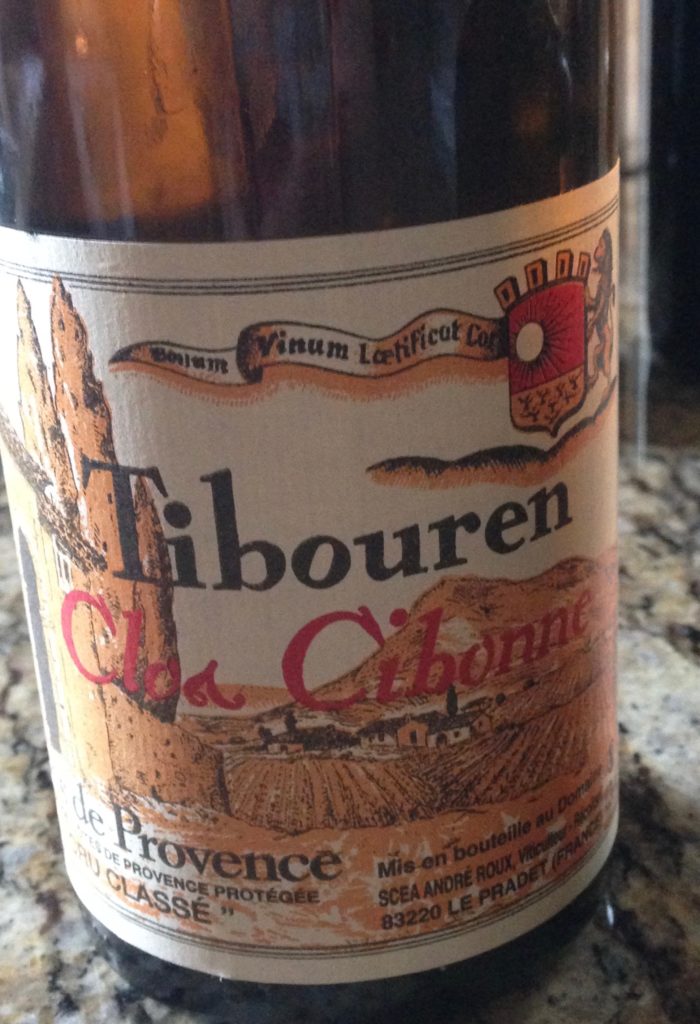
We think the coolest red grape there is the ancient, local Tibouren. It was saved from extinction thanks to Clos Cibonne, one of the 18 Cru Classés Côtes de Provence estates. Tibouren produces rich, aromatic rosés with beautiful fruit flavors and lengthy elegance. Clos Cibonne produces both reds and roses with mostly or 100% Tibouren.
The main white varieties are Rolle (Vermentino), Ugni Blanc, Clairette, Sémillon, Bourboulenc, Grenache Blanc, and Sauvignon Blanc.
Chardonnay is allowed, but only in the appellation of Bellet.
Wine Styles (11:26)
Provence produces red and white wines in addition to all those rosé wines but only 7.5% is red and a mere 3.5% is white.
The Provence Pink Party (12:00)
However, when it comes to Provence rosé, there’s an expected style, as many winemakers work for multiple domaines.
The Provence rosé style is dry, light in color, aromatic and fruity. It is made to be affordable, versatile and ready to drink – chilled that is. A majority of it is made by direct press, hence the light pink color, rather than maceration and bleeding (aka saignée method).
There are even some oak aged rosés that have the potential to age. But those are more the exception. Chateau d’Esclans makes the most expensive rosé in the world – the oak-aged Garrus.
Regions (13:50)
Despite all that, the different soils and climates within Provence give the nine main AOC/AOPs and sub-regions their own personalities.
96% of Provence AOP wine comes from three appellations.
- Côtes de Provence – which lies to the east and is the largest producer by far
- Côteaux Varois en Provence – the cooler, hilly area in the middle of the three
- Côteaux d’Aix-en-Provence – to the west/northwest where 60% of its production is red wine
Côtes de Provence (15:41)
Huge and quite diverse, it has both coastal and continental climate conditions. All of the various soil types – schist, limestone, volcanic – exist in the Côtes de Provence too.
It is also the only appellation that is further divided into four sub-appellations (Frejus, La Londe, Pierrefeu, and Sainte Victoire) each with their own specific production standards for red and rose’ wines.
We really did blast through the sub-appellations here, so bear with us.
Côtes de Provence Frejus
Soils and climate depend on how far inland the vineyards are located. The inland valley has similar conditions to the Côtes de Provence Pierrefeu where the climate is more Mediterranean, hot and dry, and the soils are made up of schist, sand and limestone. Closer to the sea, Frejus’s vineyards experience conditions more like the sub-appellation La Londe.
Côtes de Provence La Londe
The temperate climate here is directly influenced by the sea due to its proximity to the Mediterranean. This means lots of sun, lots of wind, and a dry (little rainfall), somewhat moderated climate in which to sip those wines! This coastal area has crystalline Massif, schist, and acidic soils.
Pierrfeu
Pierrfeu produces red and rosé wines, like pretty much all the other areas. It also boasts some of that continental climate more inland, but still gets that moderation from the sea.
Côtes de Provence Sainte Victoire
Clay-limestone soils and experiences a “inland” Mediterranean climate with the addition of the hot, dry Mistral wind.
Côteaux d’Aix-en-Provence
This region has similar conditions to the Sainte Victoire sub-appellation because they are next to each other. It is also heavily influenced by the Mistral wind. White wine is produced here as well.
Côteaux Varois en Provence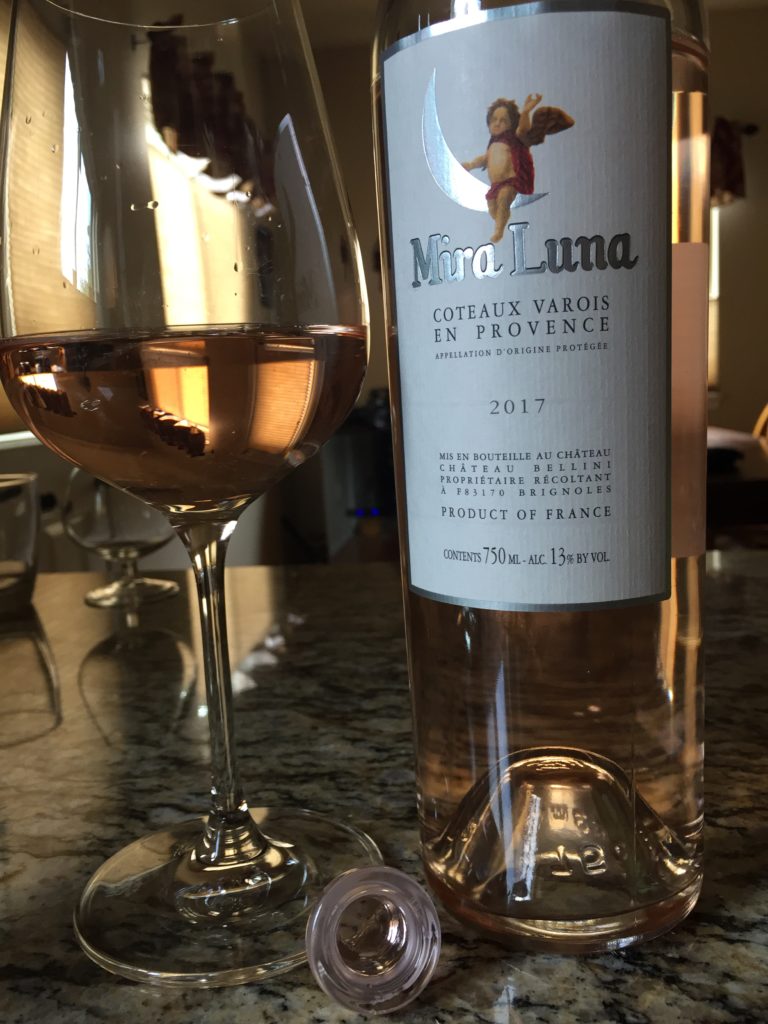
It’s diverse with mesoclimates due to variations in altitude/elevation and chalky clay-limestone soils. The relatively higher elevations create wines with more power and structure. White wines make up about three percent of this region’s production.
[Val has one of these open as this episode goes live. Surprised by the vibrant apricot and cantaloupe, wild strawberry flavors, depth and even a little a salinity on the finish she found it ridiculously satisfying. Give her a rocky beach, very few people (you kids get off her lawn), a bowl of moules frites, and zero access to Twitter. A lovely wine on a 95 degree day!]
Six Smaller Appellations (17:55)
These are listed below in order of volume
- Bandol
- Pierrevert
- Les Baux-de-Provence
- Cassis
- Palette
- Bellet
Bandol
On the coast between Toulon and Marseille, Bandol is known for its hot, dry, long growing season … and its Mourvedre vineyards. All the vines grow on the hillsides. The soils are mainly limestone, sandstone and sandy marl.
Pierrevert
Established in 1998, Pierrevert is located in the northernmost part of Provence. The wines can be remarkably similar to those of the Rhone Valley, thanks to strong Alpine influences and diurnal temperature swings.
Les Baux-de-Provence
This area is named after the rocky outcropping “baou” in the village. This appellation is Southeast of Avignon. It is a very hot area, next to Val d’Enfer (Hell Valley), and focuses on red wine production.
Cassis
Cassis a small appellation on the coast near Marseille. The vines are terraced and sheltered from the Mistral wind by the limestone cliffs. It is a unique appellation because it focuses on white wine, specifically made with Marsanne, although red & rose’ wines are made here.
Palette
Palette is a tiny appellation with limestone soils. It is known for its use of obscure grape varieties in its blends – white, rosé and red blends – as well as its oak aging requirements for red wines (18 months). There’s also something truly geeky made here called vin cuit, a local specialty served on Christmas Eve which is made by cooking grape must over an open fire and then fermenting it in barrel for a year.
Bellet
Bellet surrounds the town of Nice and has a small number of producers. The soils are chalk and silica, and the vineyards are terraced above the Var River. What makes this appellation unique is that Chardonnay is permitted here. The rosés also stand-out because of their rose petal aroma, but again, red and white wines are produced here.
Summing it Up (22:30)
So yes, most of the wine is rosé. Provence is also a region known for blended wines. The geology, topography and soils are a mosaic of diversity. The wines are of high quality and affordability because of the region’s perfect growing conditions and dedication to innovation.
Resources (23:23)
Feed Your Inner Francophile … or Quench Your CorkDork Thirst
- The Bubbly Professor is publishing some fun, fascinating “Confusion Corner” pieces. This piece mentioned AOC Palette, not to be confused with the words pallet or palate or pallette. https://bubblyprofessor.com/2018/05/08/confusion-corner-palate-palette-pallet-aoc-palette/
- For Francophiles: French Word a Day by Author Kristin Espinasse should not be missed. Go to Provence just about daily through her stories, French lessons, and beautiful photos of life in the country http://french-word-a-day.typepad.com
In the Mood for More Rosé Goodness?
- The Italian Rosé Renaissance with Elizabeth Gabay MW webinar via Wine Scholar Guild September 12th, 2018 12pm EST
Reminder: A Killer of a Book Club (25:16)
#W25BookClub – we will be recording this episode next week on July 5th.
Tangled Vines : Greed, Murder, Obsession, and an Arsonist in the Vineyards of California, by Frances Dinkelspiel. This book was selected by our very first patron Meg in South Dakota, and she will be leading the book discussion in July. Stay tuned for that episode and go buy yourself (or borrow) the book. We all have plenty of time to indulge in the story and share some opinions.
It’s on Audible (www.audible.com), so you don’t even have to read it. You can walk, garden, drive, fold laundry, and listen!
Shoutouts (25:40)
Another 5-star review on iTunes!
This one is from D.Kevil titled A true delight:
“An absolutely delightful podcast. I find the subject matter incredibly soothing and the hosts are knowledgeable and entertaining. What a treat. Cheers!”
Patreon Love (26:40)
Thank you to our Patrons who support us on our Patreon crowdfunding platform!
“Riserva Superiore Supporter”
- Robin from Girls Gone Grape
“Riserva Supporter”
- Antti in Georgia!
“TENacious Tasters”
- Jeff E from the award-winning We Like Drinking podcast
- Sebastian of Sassi Italy Tours
- Jen in Maryland (and the world, according to her Instagram feed)
- David and Lisa in Illinois
- Ann Marie in Virginia
“It’s not five o’clock and we don’t care” Listeners
- Meg in South Dakota
- Clay in Arizona
- In California – Jon, Andrew, Aswani
- Chantel in Ontario, Canada
- Mary Lou in Pennsylvania
- Cathie in Georgia
- In Colorado – Chris and Janet, Diane
- In Illinois – Steve, Renee
- Cathey in Tennessee
- Ashley in North Carolina
- Sean in Ohio
“Tastemaker Listeners”
- David in Scotland
- Carole in Kentucky
- Karen in California
- Chip & Karen in Pennsylvania
- Danielle
- Sirena in New York
Our Patreon page has details www.patreon.com/winetwofivepodcast on how to be entered into our monthly giveaway, exclusive content, and swag.
All Patrons at the $2/month or higher donation level are entered into the drawing.
Connect: (28:55)
Between each weekly chat you can find us on the social spaces @WineTwoFive, and we encourage you to join our private FaceBook group called Wine Two Five Community!
And Instagram!
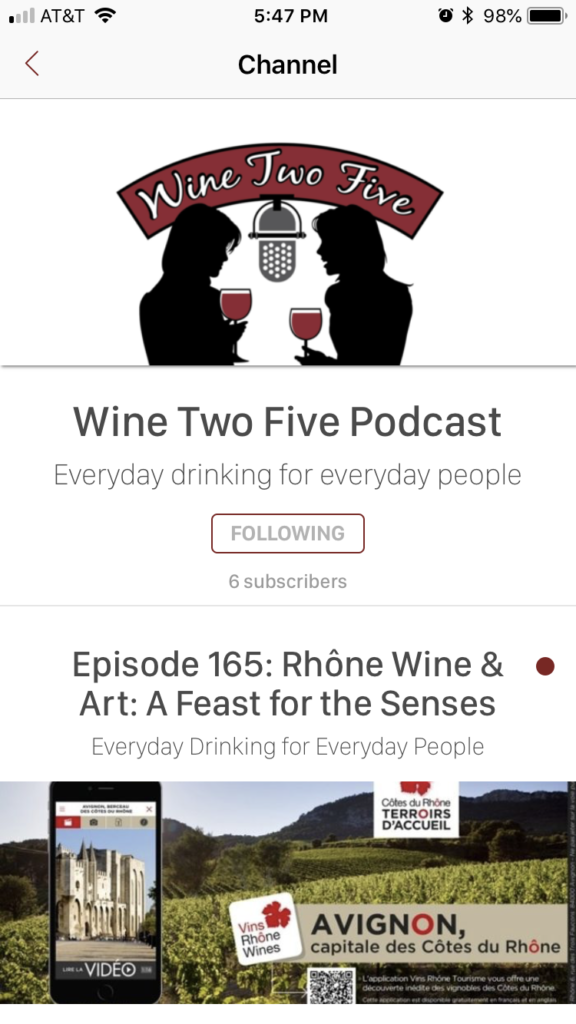
And on the My Wine Society App launching in mid-July!
Connect with Val on Twitter @WineGalUnboxed and everywhere else as @VinoWithVal.
Connect with Steph online @TheWineHeroine.

